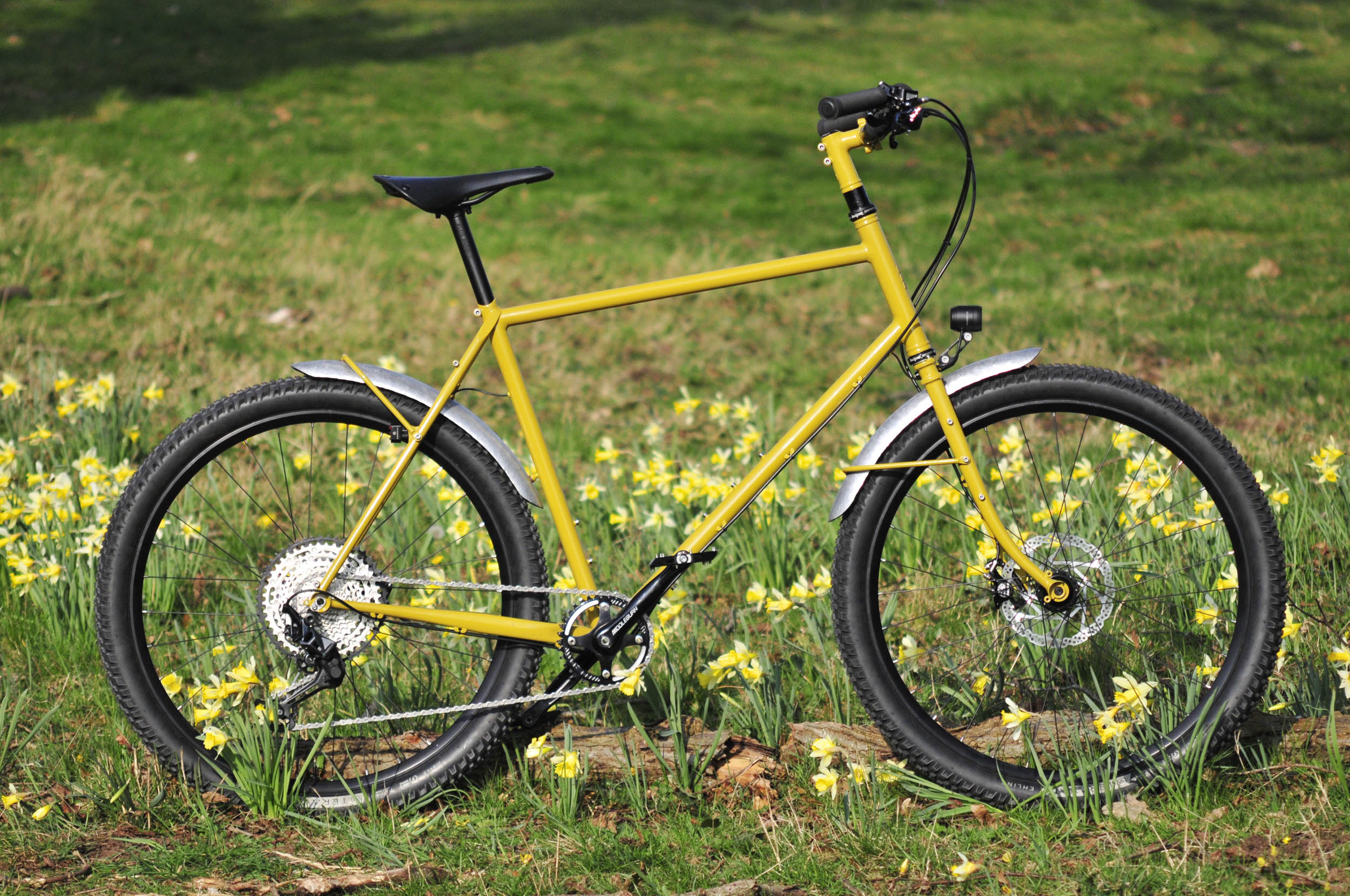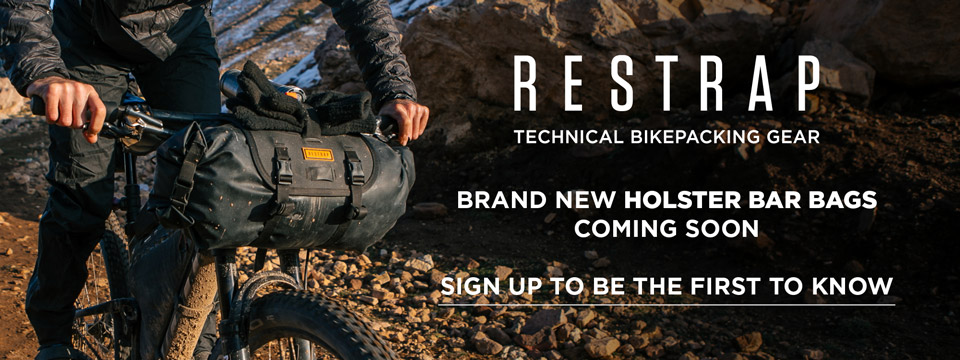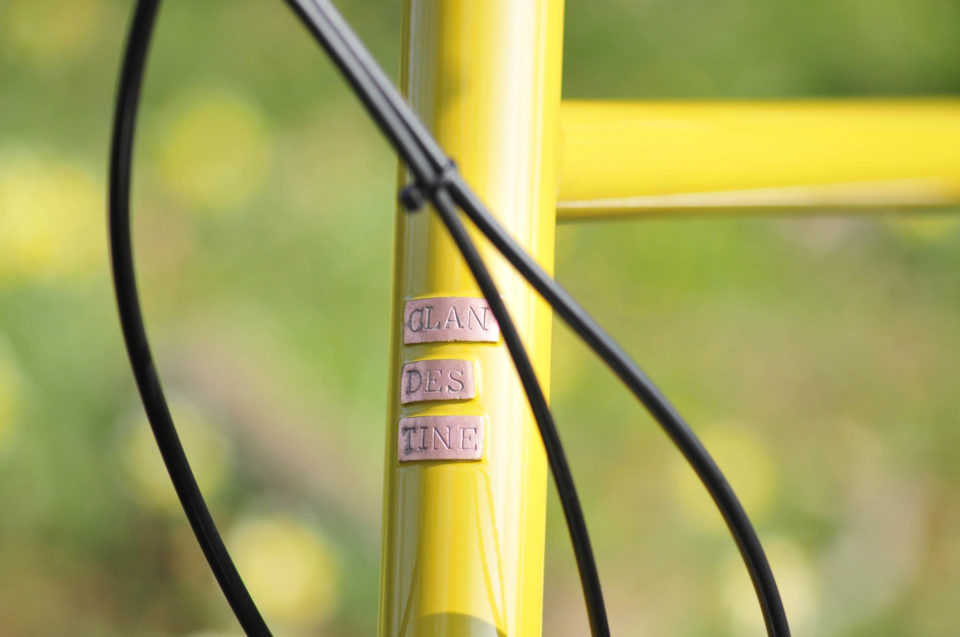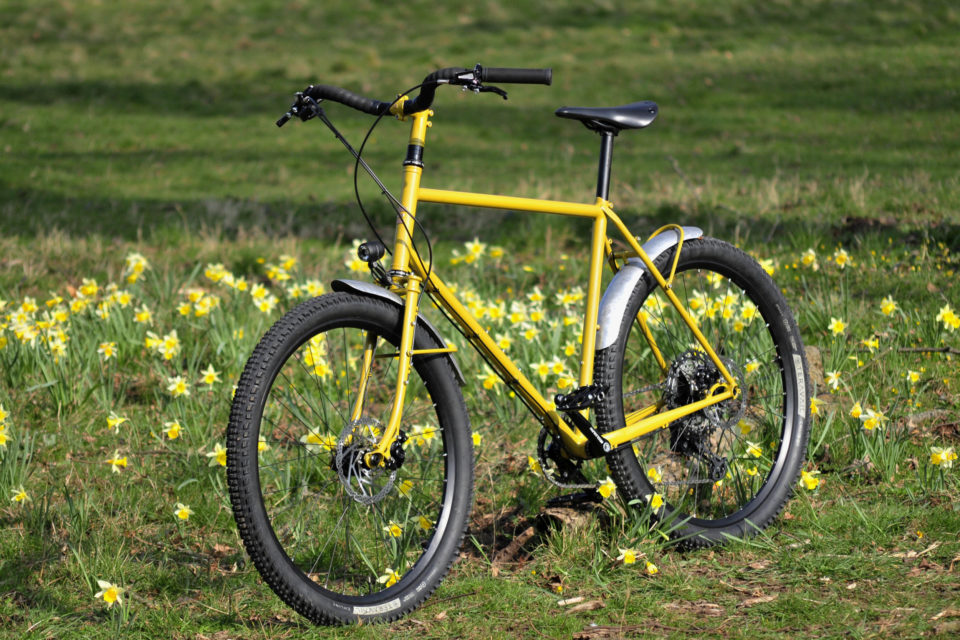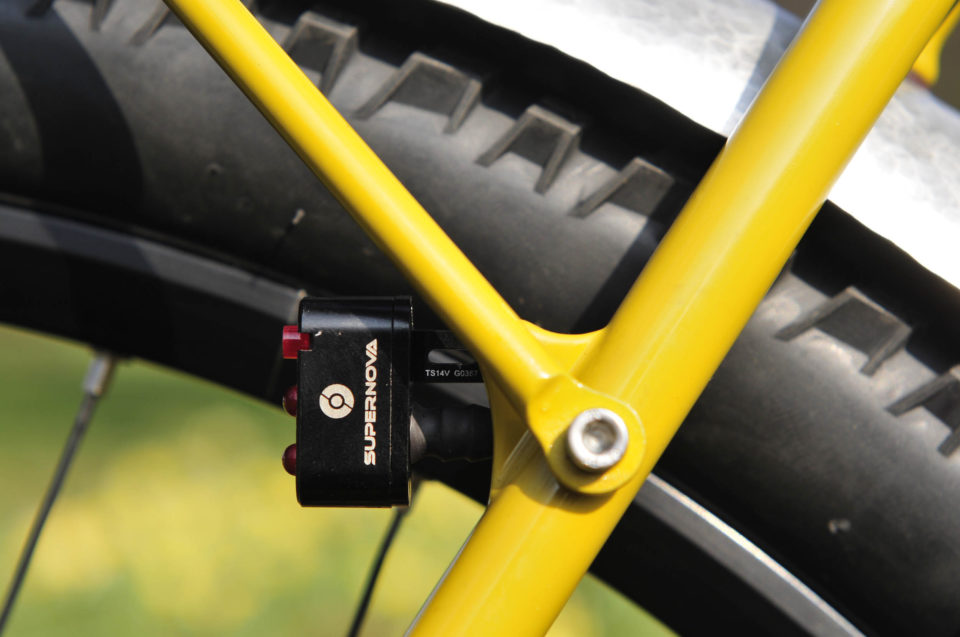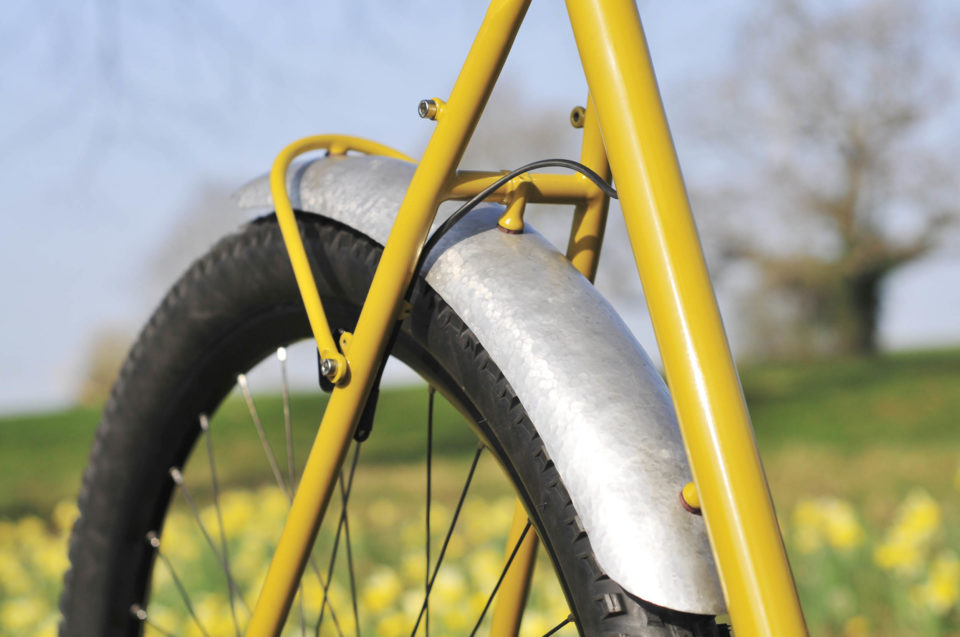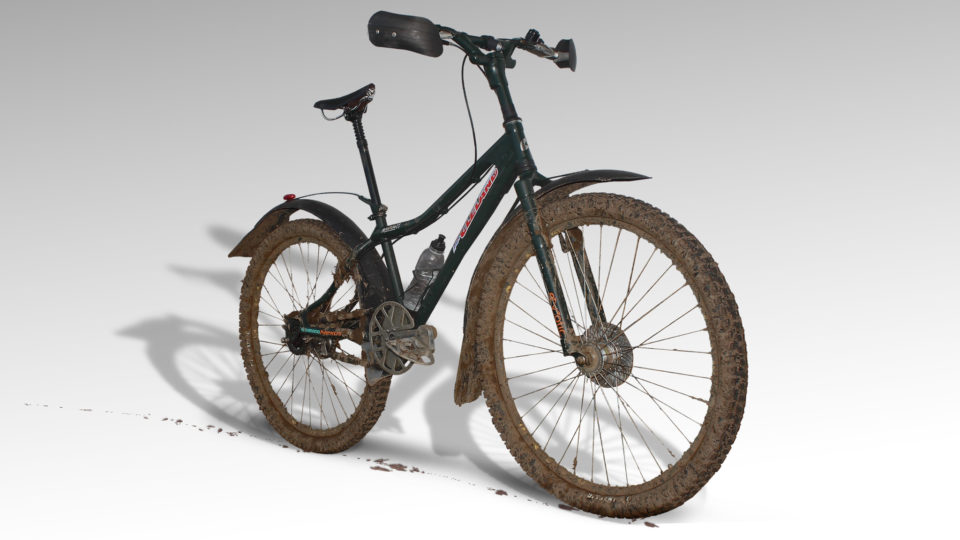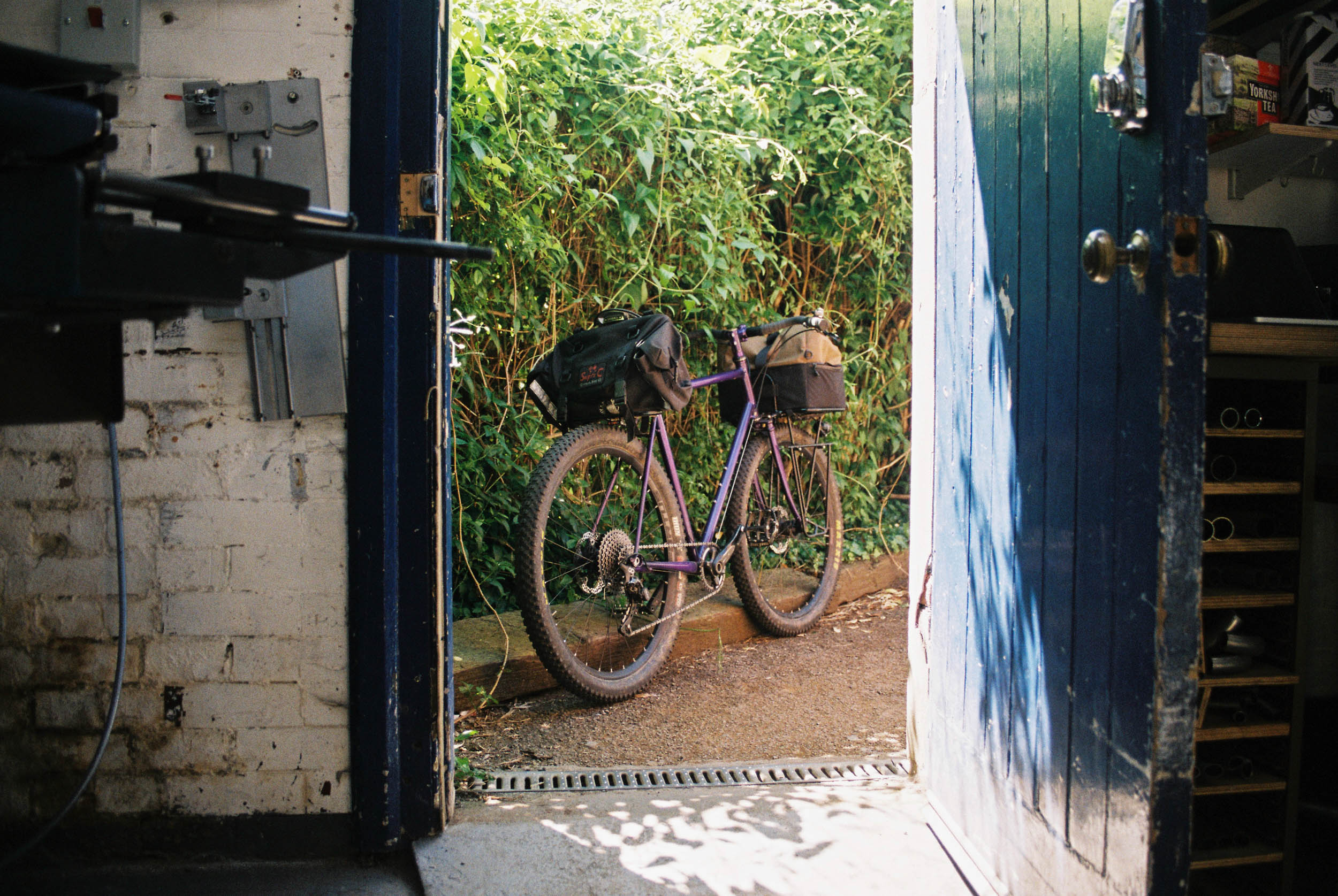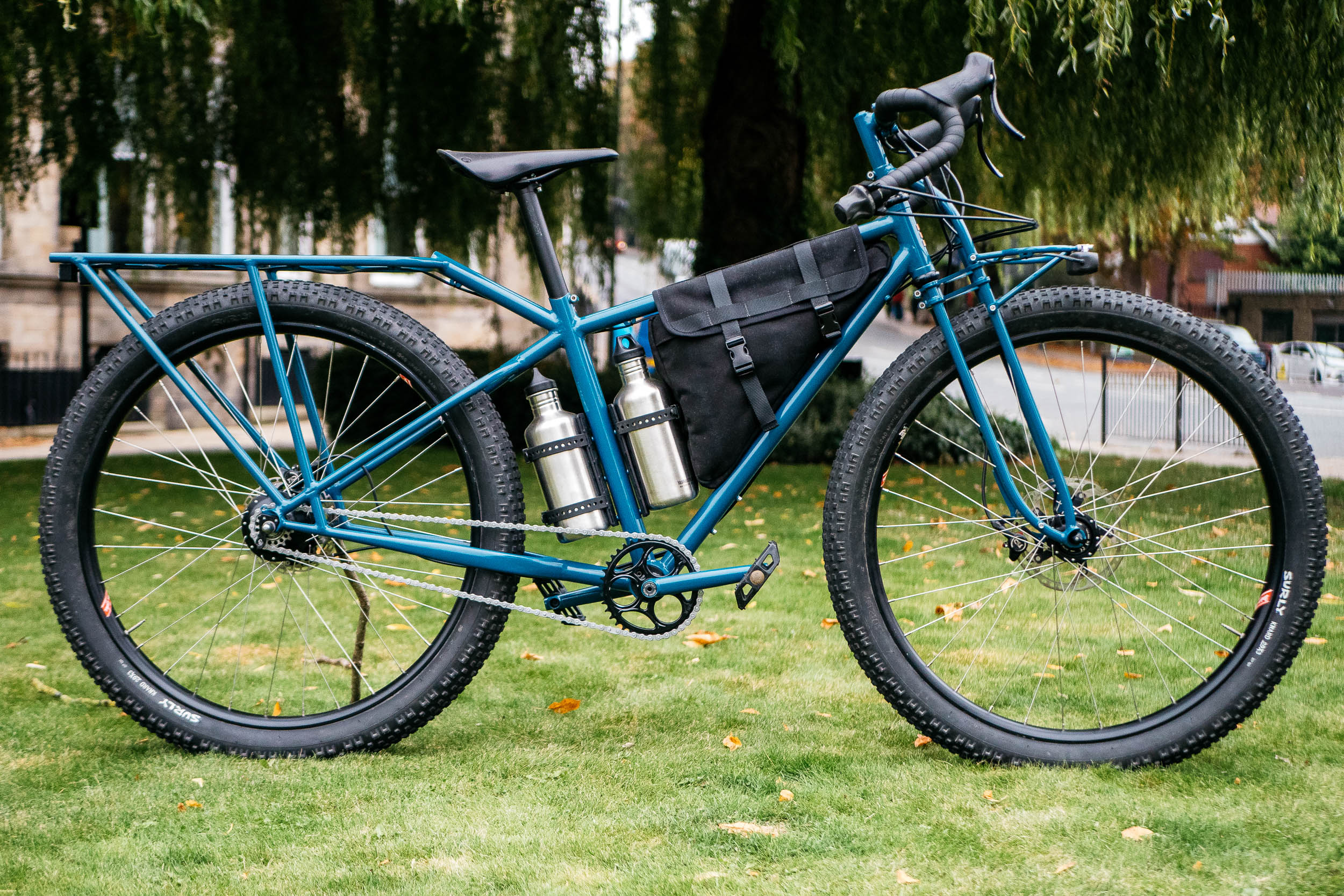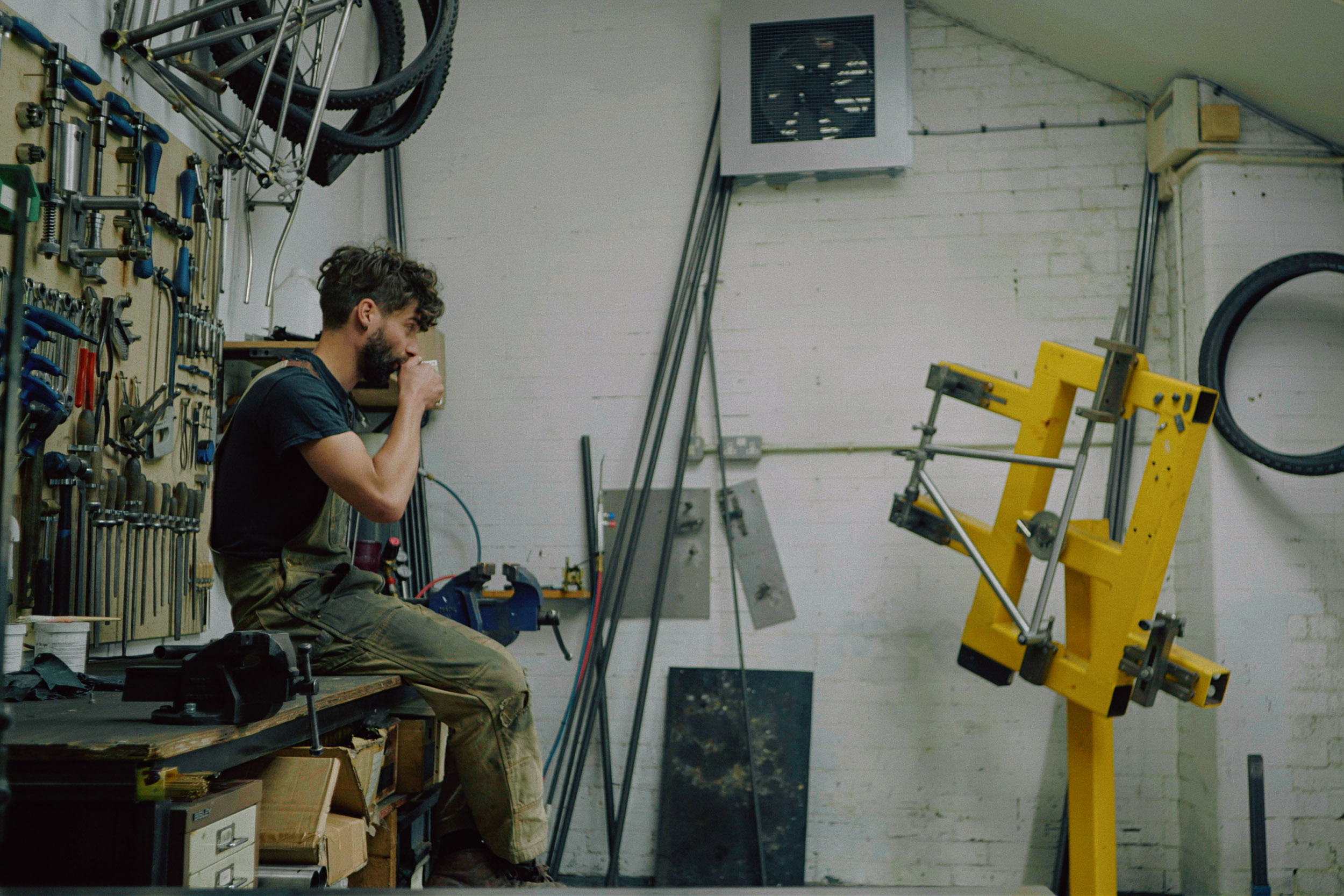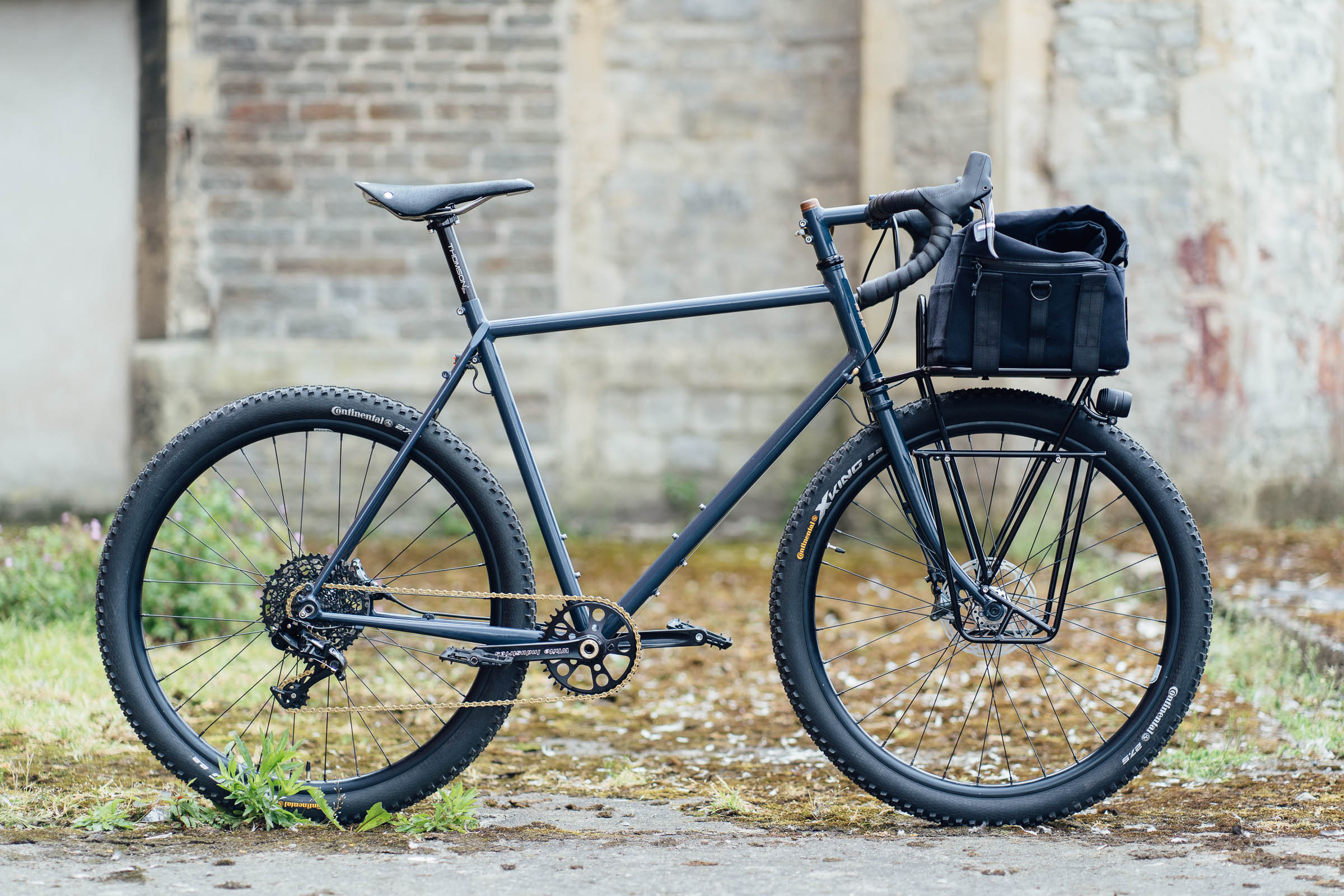Clandestine Green Lane Rouleur
Built for a potter in Bristol, UK, the Clandestine Green Lane Rouleur is a bike that aims to connect the byways, bridleways, and green lanes of the Bristolian countryside, in both style and comfort. Pi Manson shares the thought process that went into the bike, details of its countryside-friendly mudguards, and insights into the Cleland Cycles school of bicycle geometry that influenced its design…
PUBLISHED Apr 4, 2022
Images by Pi Manson (@clandestine.cc)
Resonating with our thoughts on modern-day ATBs – read the manifesto for more – framebuilder Pi Manson talks us through his recently finished Green Lane Rouleur, a custom bike made for a potter in Bristol, UK, where both are based. In addition to its unique and practical hand-hammered ‘mini mudguards’ for off-road riding and a nod to the Cleland Cycles utilitarian ethos, the GLR is built with its own, very much local, all-terrain mission: to connect the lesser travelled bridleways and ‘green lanes’ that course through the bucolic countryside that surrounds the city of Bristol.
Pi Manson and his exquisite work are no stranger to the site. We’ve been fortunate enough to feature his Carrier and his Midtail – see our grid below for links – as well as a shop visit last year. Read on to learn about the thought process that went into designing and making the Green Lane Rouleur, and find out more about a style of all-terrain bike that deserves to be more than a footnote in British mountain biking history.
Here’s Pi to tell us more…
The Green Lane Rouleur was built for Jim, a local potter here in Bristol.
Bristol, like most of the UK I suppose, is surrounded by swathes of countryside, weaved through with little back lanes where grass grows up the middle. There are farmers’ ‘green lanes’ – completely unsurfaced byways passable by 4×4, horse, foot, or bicycle, of course – with varying degrees of bog/solid ratios depending on when you ride them, which access fields and woodlands. And there are the bridleways that sneak through old landed gentry’s estates, and out to the bridges crossing into Wales. Connecting these little snippets of back ways is what Jim wanted his bike for.
Jim is quite engaged with the local makers’ scene that’s pretty thriving in Bristol, so he had a clear idea of what the custom process would look like. I think working with a craftsperson to get an object made can be intimidating, but in reality, any craftsperson’s role is to listen to, and support, a customer explaining what they need or want. That can then be translated into the maker’s method or style, and iterated collaboratively. As a craftsperson himself, Jim revelled in that process. He pedalled over to my workshop, and we hashed out the main ideas of the bike over a cuppa.
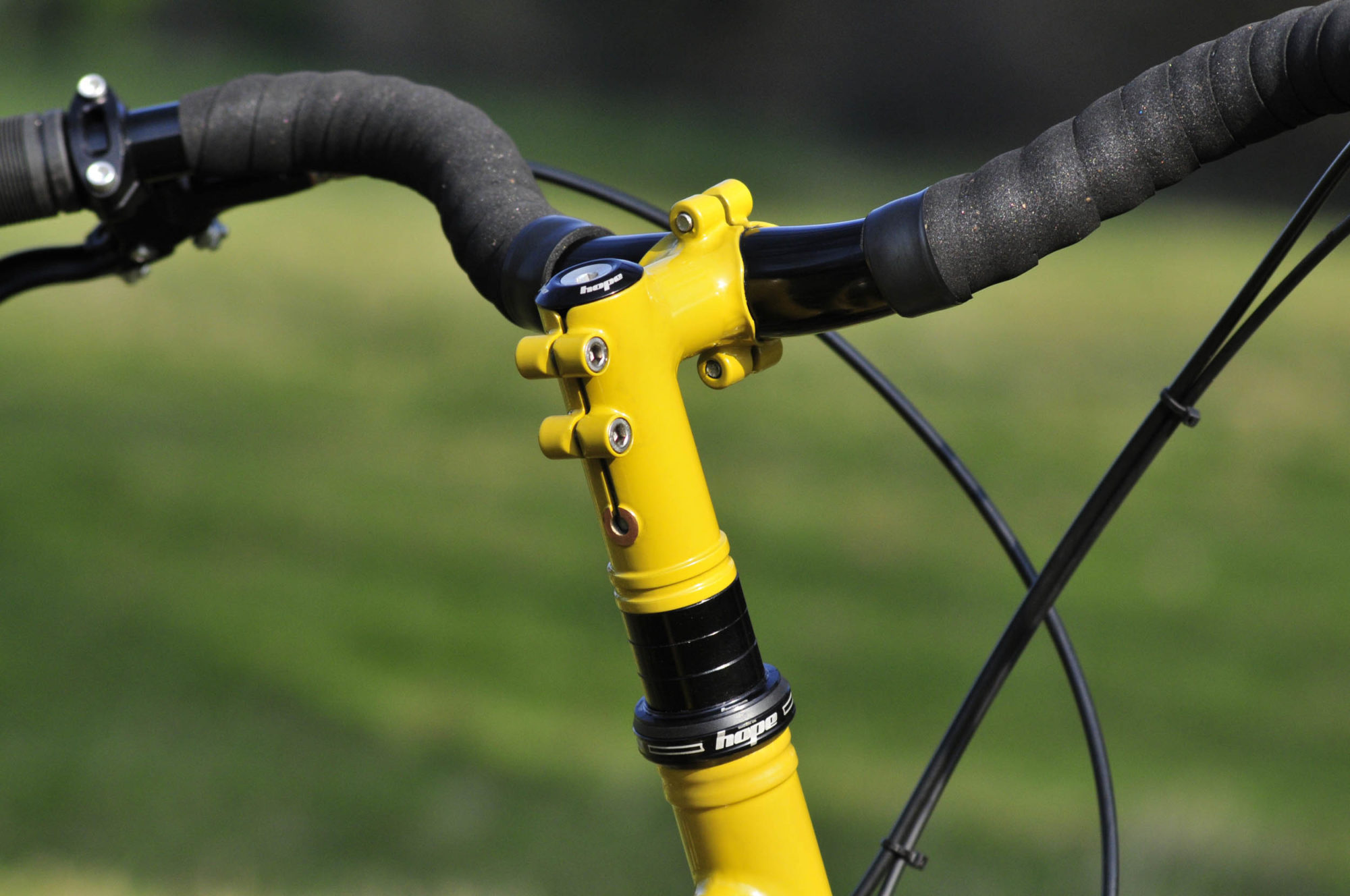
Jim gets a sore neck from any sort of leaned-over body position (too much hunkering in front of the clay pile, perhaps?) so a key element was an upright position. The 218mm of head tube got us there, combined with a high 90mm stack stem and a Surly Terminal Bars, with their 25mm rise. These photos show the bike with headset spacers, which I left in just in case, but Jim ended up taking them out, as I suspected he might. Those high bars give it a really commanding position – he can lean forward on the taped centre section of the bars, or sit back where the controls are to see over hedgerows and smell the daffodils. We went with a 12-speed Shimano drivetrain, offering a 36 x 52 lowest gear for easy spins up Bristol’s hills. Teamed with its 27.5 wheel size, this gives a 19.12 lowest gear inch. Incidentally, the frameset is built around 2.3″ tyres, with plenty of clearance for mud, as there’s room for a 2.6” tyre or so.
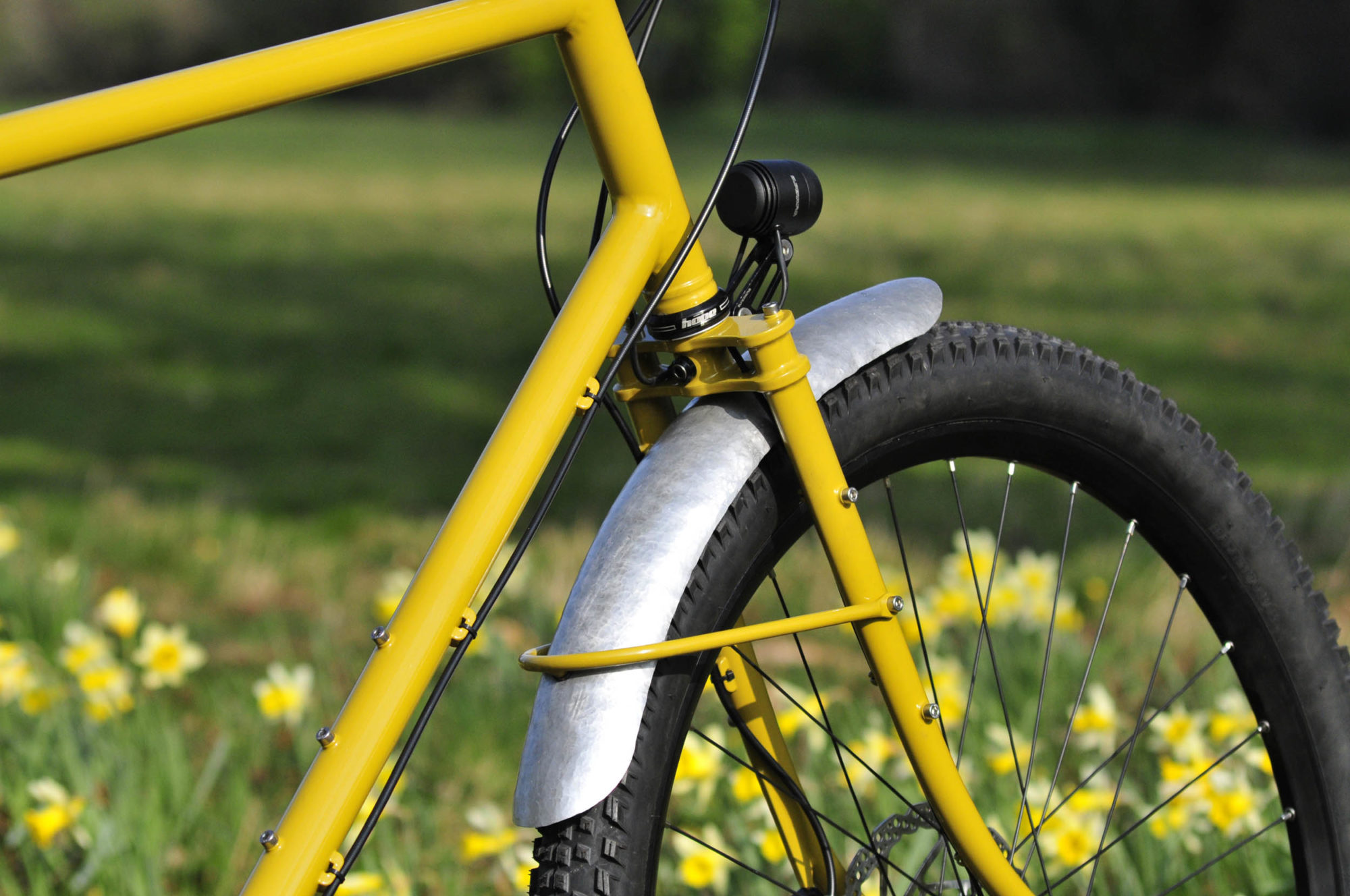
The coolest idea Jim came to me with was that he wanted particular mudguards – little ones for catching the worst of the spray or crud, rather than full-length ones that might be dangerous off-road if anything gets caught inside them. He was unsure if I’d be interested in the idea, but it actually got me really excited. I could immediately see the value. I’d never made mudguards before, but a friend taught me some simple panel beating techniques, and away I went with a peening hammer, a dolly, and a shot bag.
After some prototyping, I got a shape I was pleased with, bent up a series of chromo stays, and here we are. They’re really light, secure, and well braced. The mini guards definitely won’t keep Jim as dry as full-length ones, but they’re more secure and less likely to snag on things. Think of them as more elegant crud catchers than traditional mudguards. This sort of collaborative design thinking is something I love about the custom bike process.
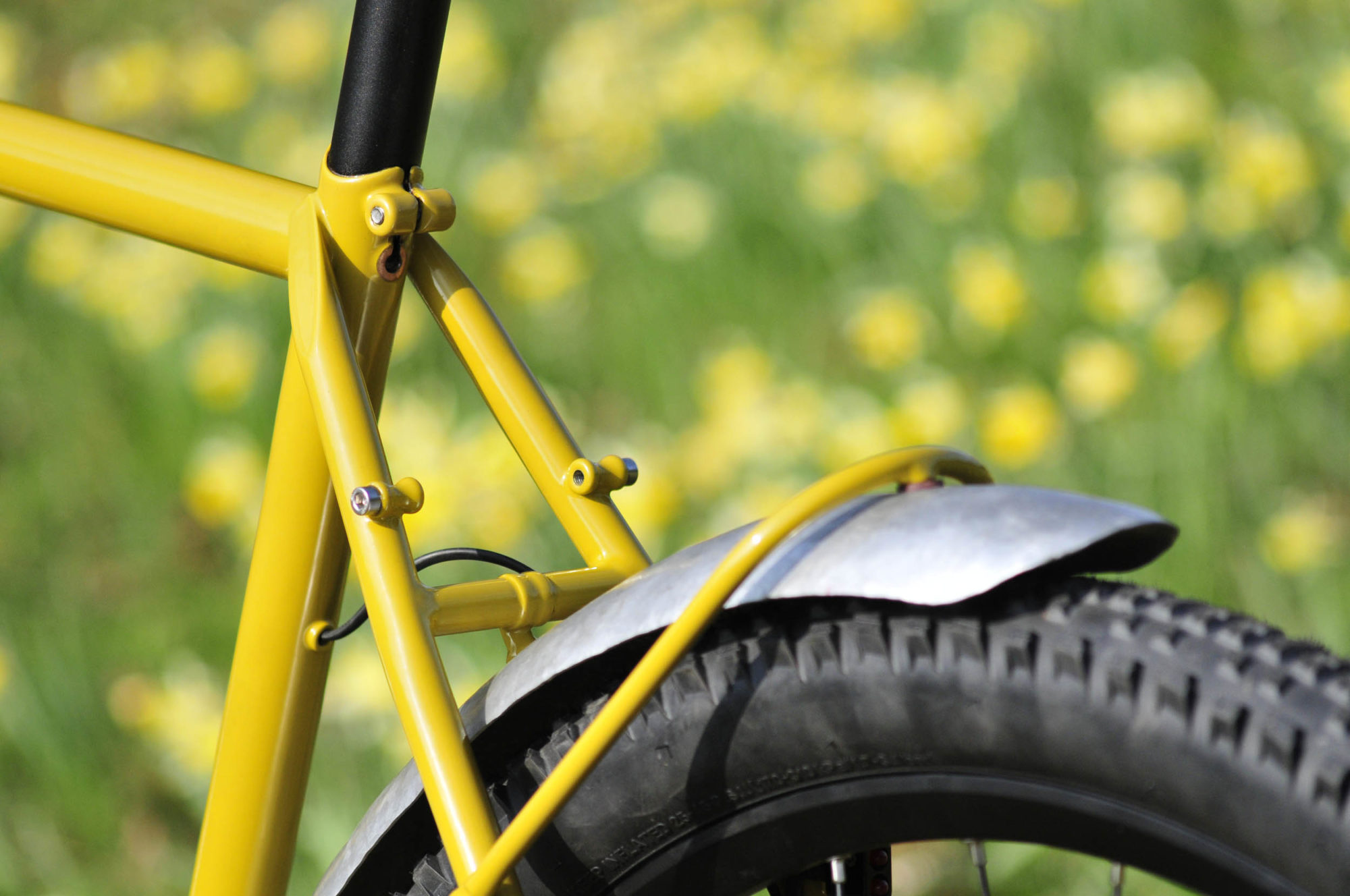
I first came across Geoff Apps, of the 1980s era Cleland Cycles, in an old CTC (now Cycling UK) magazine. At the time, I was working in a little bike shop in Devon, and I was lent a whole pile of old club magazines by an elderly customer. The CTC maybe isn’t a great bastion of radicalism and details about App’s bikes were a bit shaky, tinted by a general incredulity that the bike could be appropriate at all. Then, more recently, there was the documentary “Mountain Biking: the untold British story” and Petor from Dear Susan explored Apps’ ideas too. I’m not the first to be intrigued by this little snippet of UK cycling history, and I hope I’m not the last either.
Geoff Apps seemed to really favour utilitarianism and thinking about the whole life of a bike too, and how its use might change over time. This is something that really speaks to me. I’m always thinking about when my bikes might end up turning into round-town hacks or donated to a bike co-op. I made sure the dynamo light routing was neat and tidy with this long-term view in mind, even though Jim doesn’t envisage a whole load of nighttime green lane rides.

Geoff Apps was also a motorbike trials rider, and he designed bikes essentially to put you in a position like standing up on the pegs on a trials bike. Short wheelbases, high BBs, mudguards, and very upright. I don’t have much time for super low standovers, like the Clelands – especially in these days of frame bags. And I also like my BBs a bit lower. But the overall gestalt is one of comfort over speed, and slow speed control over high-speed berm railing. Other ingredients include fairly long chainstays at 445mm that help centralise Jim, 650b x 60mm tyres – just like those original Clelands – and a 69 degree head angle, so quite traditional compared to most mountain bikes these days. Jim’s frame is single oversize, relatively thin wall Reynolds 853 with my favourite Columbus Zona stays, and an 853 fork. But I always urge people not to get too hung up on the material. The geometry, tube OD and butting is more interesting, and how much butt is cut. That’s what really affects the feel of a bike.

Geoff Apps and Cleland Cycles
A box out isn’t enough to really give credit to Geoff Apps and his Cleland Cycles, considered by many as a pioneer of British ATBs. But it’s enough to at least send you down the rabbit hole. In brief, the story goes that Geoff Apps took up observed trials motorbike riding after moving from London to the Chilterns but was apparently displeased with “the noise and disturbance” they created. With this observed trials riding layout in mind, he began modifying conventional bicycles for off-road use in 1965. This culminated in the development of a lightweight bicycle designed around the wet mud of South East England in 1979, shod with Finnish 650B x 54mm Nokia Hakkapeliitta tyres. The utilitarian philosophy of this bike – it put “durability and low maintenance at the heart of its ethos” rather than speed – and the way in which observed trials riding strongly influenced its geometry – is summed up here. In addition, Apps developed and specced all kinds of componentry suited to his local terrain, including an aluminium bolt-on skateplate and chain guard, custom stayless mudguards, along with Leleu ‘floating-cam’ drum brakes for the very muddiest of rides.
Images by gmacleland
“In this sport, the competitive element of the riding is done ‘standing on the pegs’. This position provides a high centre of gravity for manoeuvrability, allowing rapid and extreme upper-body moves to adjust balance, traction, and steering, with a minimum of effort. In his bicycle design, Geoff placed the saddle and handlebar so as to replicate this ‘standing on the pegs’ stance. Despite the presence of a fixed saddle, the resultant upright riding position still allows plenty of upper-body movement, proving gentle on the wrists, is perfect for low-speed technical riding, beneficial to long-term spinal health, and allows the rider to easily observe their surroundings. Unlike the Fairfax bikes (in Marin County), the Cleland design is not concerned with racing and fast downhill descents. Its ethos is rather to keep going, whatever the terrain or difficulty of the conditions. It is designed for all-weather exploration, where you need to reach your destination without breaking down, getting stuck in mud, or having to stop continuously for fallen logs that block the trail; all achieved with maximum riding efficiency and minimum rider fatigue; totally reliable with ultimate functionality.”
Cleland Cycles Ltd was set up to manufacture copies of his design in 1982 and was sold under Apps’ Cleland Cycles brand until 1984 – the Aventura, a bike that was “designed to ride efficiently and reliably cross-country, particularly in soggy UK conditions, in all weathers.”
Apps lives in Scotland where he continues to ride and develop bicycles. For further reading, check out the fascinating Cleland Cycles website, an equally interesting flickr stream, Carton Reid’s piece on the “English Gary Fisher,” and if you can track it down, an excellent article in issue 3 of the now-defunct Privateer, titled The Lone Range Rider.
The result of all this is a practical “all-terrain bike” that’s loosely inspired by Apps. I find this approach much more encouraging than “gravel” bikes, which take as their starting point from something that, to my mind, doesn’t fit so well within the British trails environment. I can’t help feeling that the Cleland riding position is also so much more accessible than the common gravel bike setups I see. It represents a whole seam of off-road bicycle design that hasn’t been either really recognised or explored further, yet 40 years after it was first developed, I think is more relevant than ever.
Green Lane Rouleur Build Kit
- Frame Clandestine full custom, fillet brazed
- Fork Clandestine custom twin plate crown fork
- Headset Hope
- Stem One piece custom stem
- Handlebar Surly Terminal
- Grips BLB
- Brakes Hope X2
- Rotors Hope standard
- Shifter Shimano SLX
- Rear derailleur Shimano SLX
- Crank and chainring Middleburn and Hope
- Cassette Shimano Deore 11-52
- Chain Shimano SLX
- Front hub SP PD-8X
- Rear hub DT Swiss 240
- Spokes Sapim Race
- Rims DTM442
- Tires Teravail Ehline Light and Supple 27.5 x 2.3″
- Seatpost Gusset
- Saddle Brooks C17 Carved
- Frame and fork mounts Full rack and mudguards, triple packs on downtube, triple pack mounts on fork
- Other notes Mini Mudguards with hand hammered finish
- Extras Supernova dynamo lights front and rear
Related Content
Learn more about Pi Manson and his bikes by visiting his website, Clandestine, or following him @clandestine.cc. Also, check out our site visit below, as well as a few other bikes we've covered:
Please keep the conversation civil, constructive, and inclusive, or your comment will be removed.







